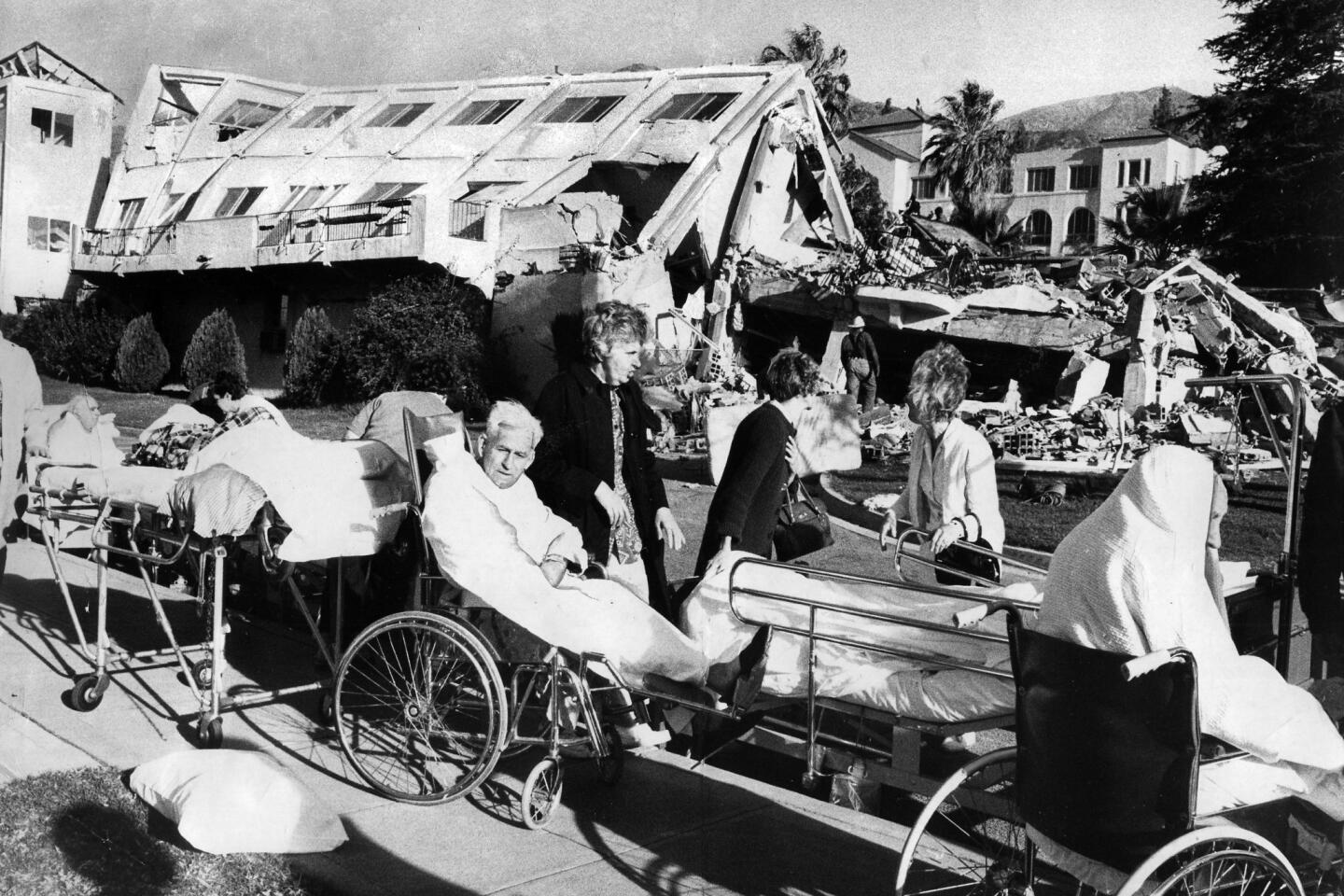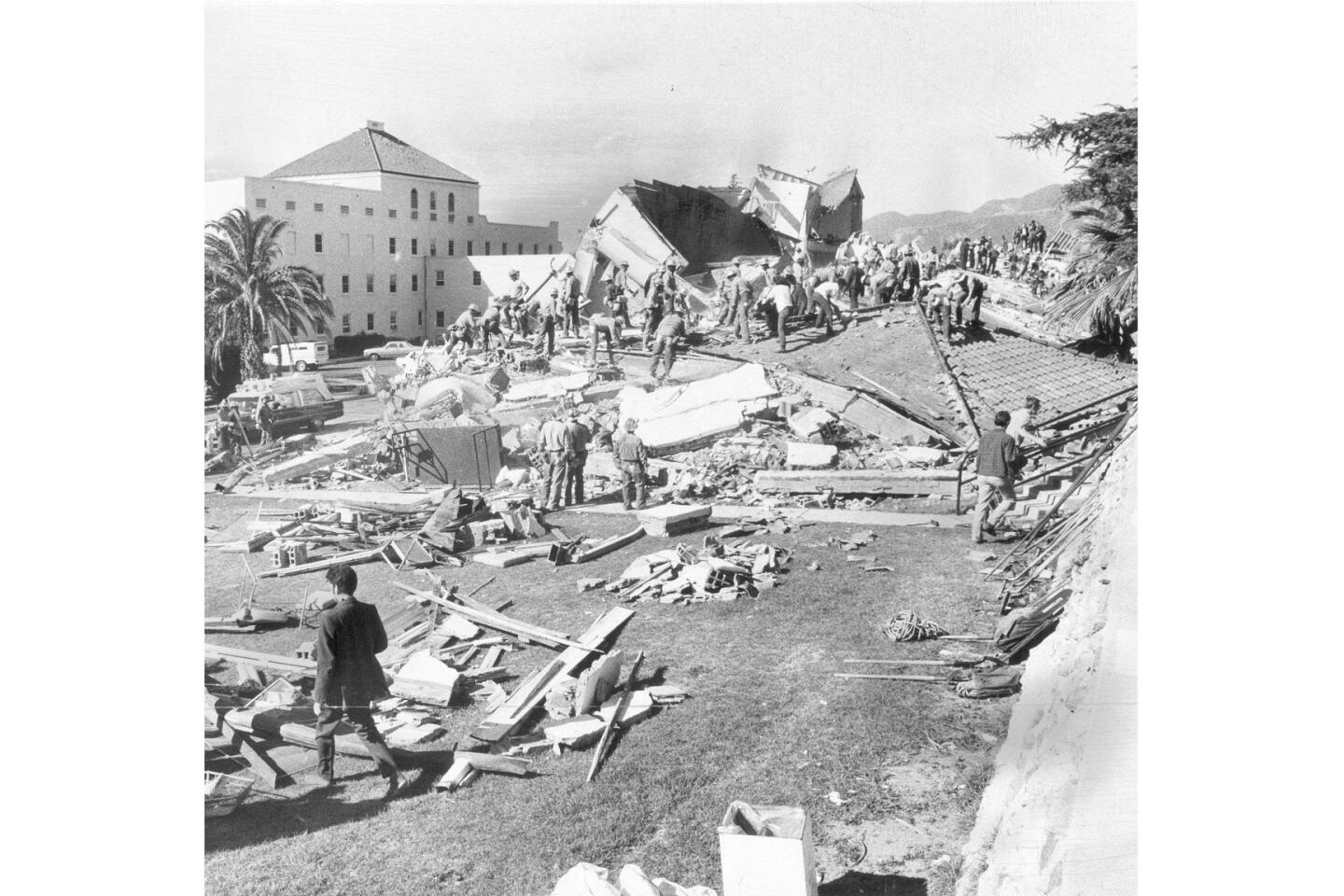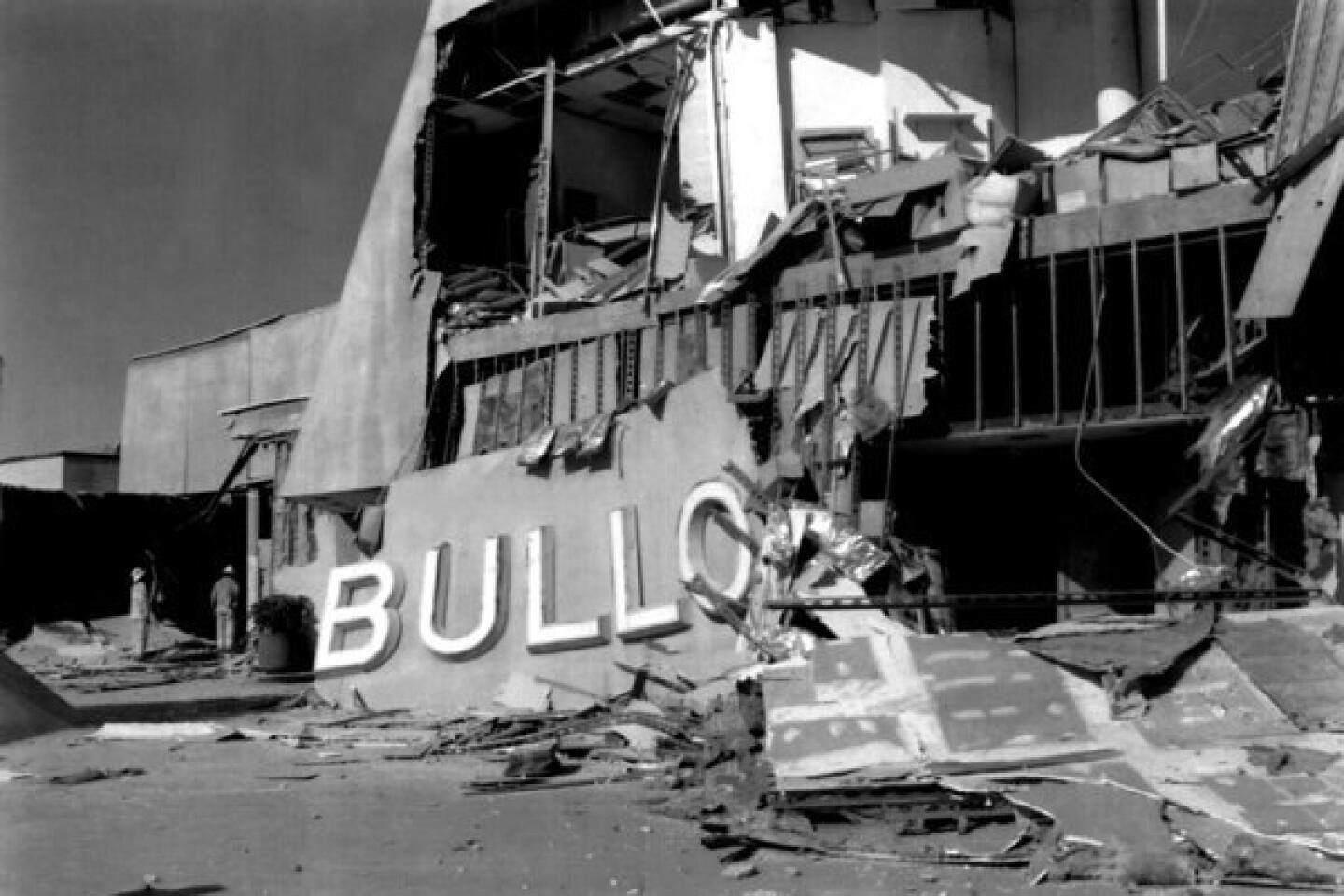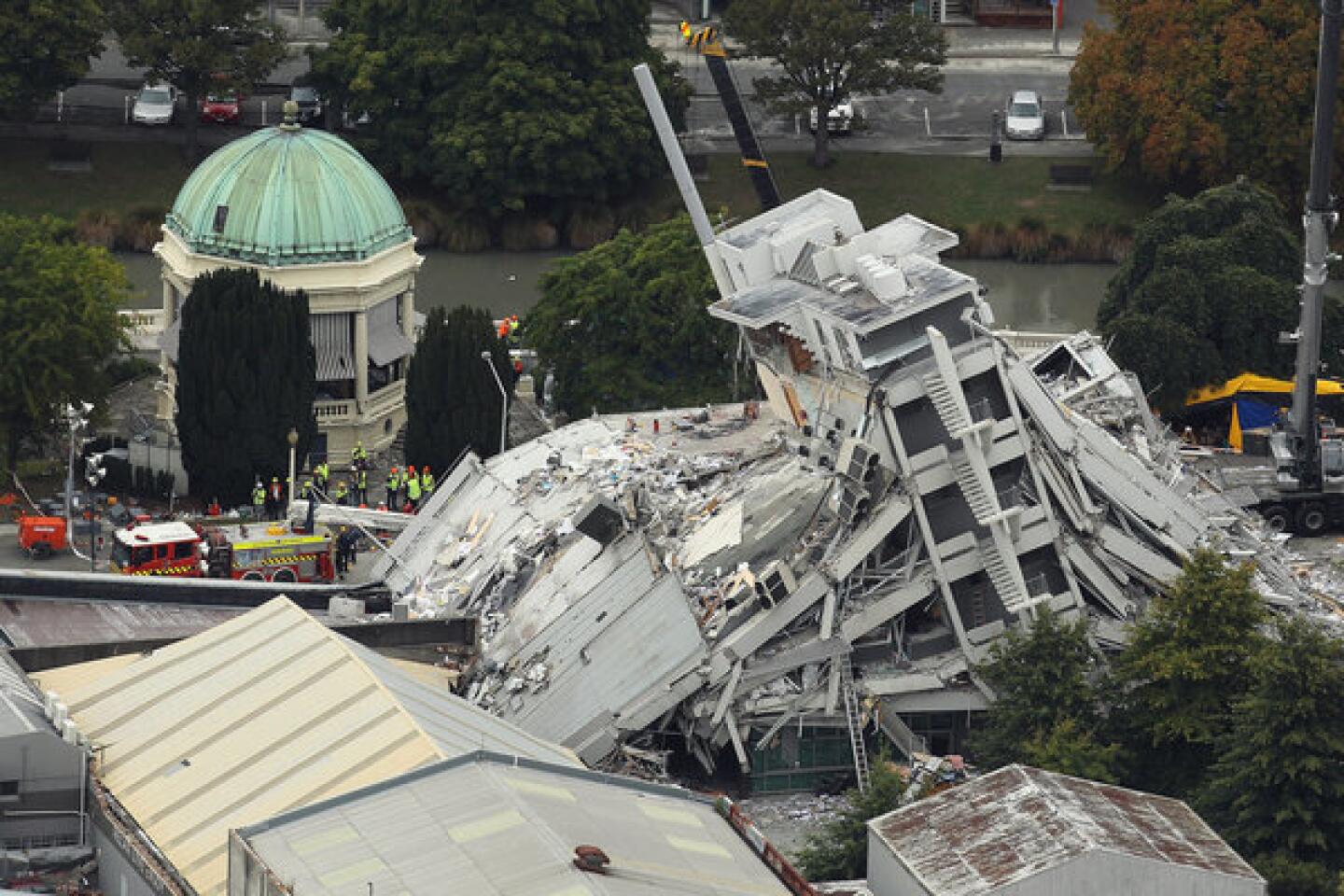More quake action needed on older concrete buildings, councilman says
More than a year ago, council members Bernard C. Parks and Tom LaBonge called on Los Angeles officials to review and report on the city’s older concrete buildings, which are considered a major risk to life safety during a big earthquake. In January, the City Council instructed building officials to report back on the issue in 60 days.
Nine months later, council members are still waiting for an update.
“What’s the delay?” Parks said in a recent interview. “If you know the buildings are sub par, and you’re still letting literally thousands of people come in them, go to work, and thousands of people to live in them, what do we do if we wake up tomorrow and the earthquake hits?”
The city’s Department of Building and Safety has been working on recommendations that will be included in a more comprehensive report from Mayor Eric Garcetti’s office, said department spokesman Luke Zamperini.
The mayor’s report is expected to cover a number of seismic safety issues in L.A. and will be released by the end of December. Garcetti, who partnered this year with Lucy Jones of the U.S. Geological Survey, has said he would be looking specifically at older concrete buildings as well as “soft-story” wooden apartments, another type of structure known to be at risk during an earthquake.
Parks, however, voiced concern about how little has been said by officials regarding concrete buildings.
The city was already given a significant head start, Parks said. In January, the University of California released a list of about 1,500 old concrete buildings that gave city officials the first look at identifying the ones most likely to fail in an earthquake. Researchers emphasized the list was preliminary, and each building would need to be examined more closely and undergo extensive testing to gauge their vulnerabilities.
At least some owners should’ve been notified by now to begin engineering assessments, Parks said.
Speaking hypothetically, Parks said, “I’d think that at a minimum, Building and Safety would’ve been able to say by now: We’ve looked at the 1,500 buildings on the study, and of those 1,500, we believe 70% of them need additional attention. We’ve also discovered that there’s another 500 that we didn’t know about, and we need to look at those.”
Parks and LaBonge’s motions followed a Times report last year that found, by the most conservative estimate, that as many as 50 of the more than 1,000 old concrete buildings in the city would collapse in a major earthquake, exposing thousands to injury or death.
Los Angeles officials have known about the dangers of these buildings for years, but concerns about costs killed earlier efforts in L.A. to identify and order property owners to retrofit their buildings. Many owners said they shouldn’t have to pay for expensive fixes on their own. The costs for an engineering assessment of a single building could be tens of thousands of dollars or more.
Property owners and tenants this year have also raised concerns of how, and who, will be financing these costly retrofits. City officials have been exploring ideas such as tax breaks, a bond measure or low-interest loans.
Complicating the concrete issue is the question of whether owners should be forced to retrofit their buildings should the evaluations show that they need strengthening. The city’s top building official said earlier this month that he will be recommending mandatory retrofitting for the city’s thousands of wooden apartment buildings, which his agency has spent months cataloging.
He has not said what is being considered for concrete buildings, which are more difficult -- and much more expensive -- to assess and retrofit.
Parks said the issue of financing was distracting officials from the ultimate goal.
“It can’t be anything by mandatory,” he said. “We have been clearly notified that there are hazards.… If a building falls, do you think people are just going to sue the owners? No, they’re going to say: City, you had a list from Berkeley five years ago, and that building was on it.
“The goal is: Fix the buildings, protect the infrastructure, protect the people,” he said.
Follow @RosannaXia and @ronlin for more news about seismic safety.
More to Read
Sign up for Essential California
The most important California stories and recommendations in your inbox every morning.
You may occasionally receive promotional content from the Los Angeles Times.


















